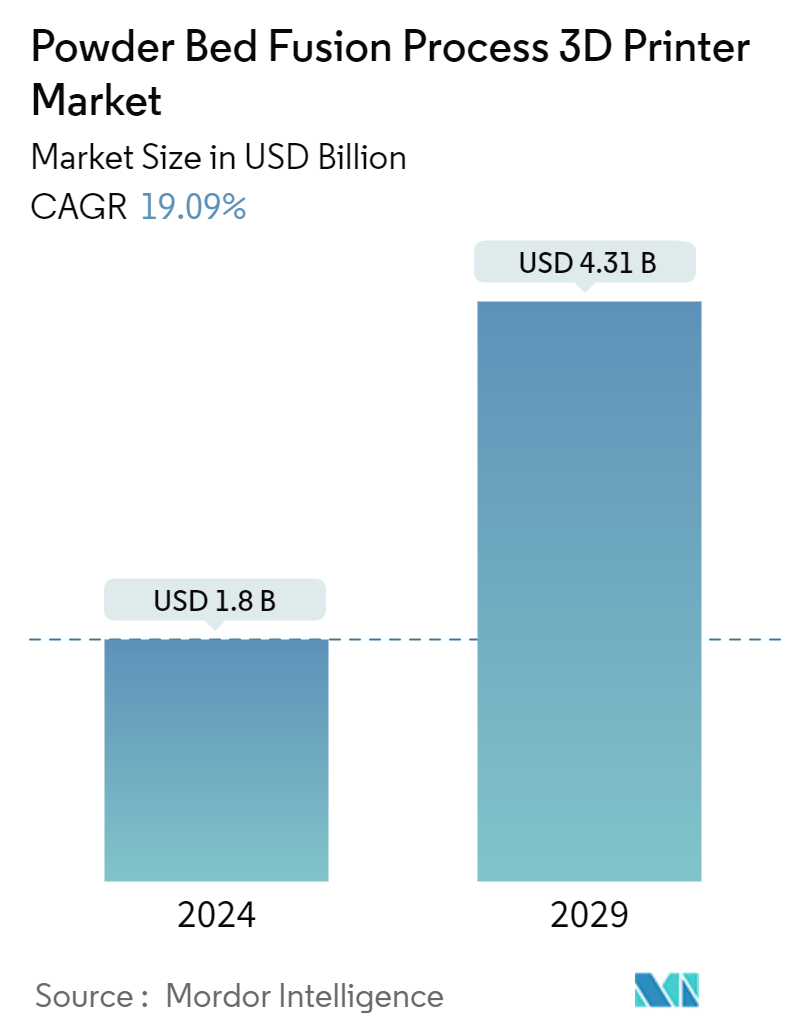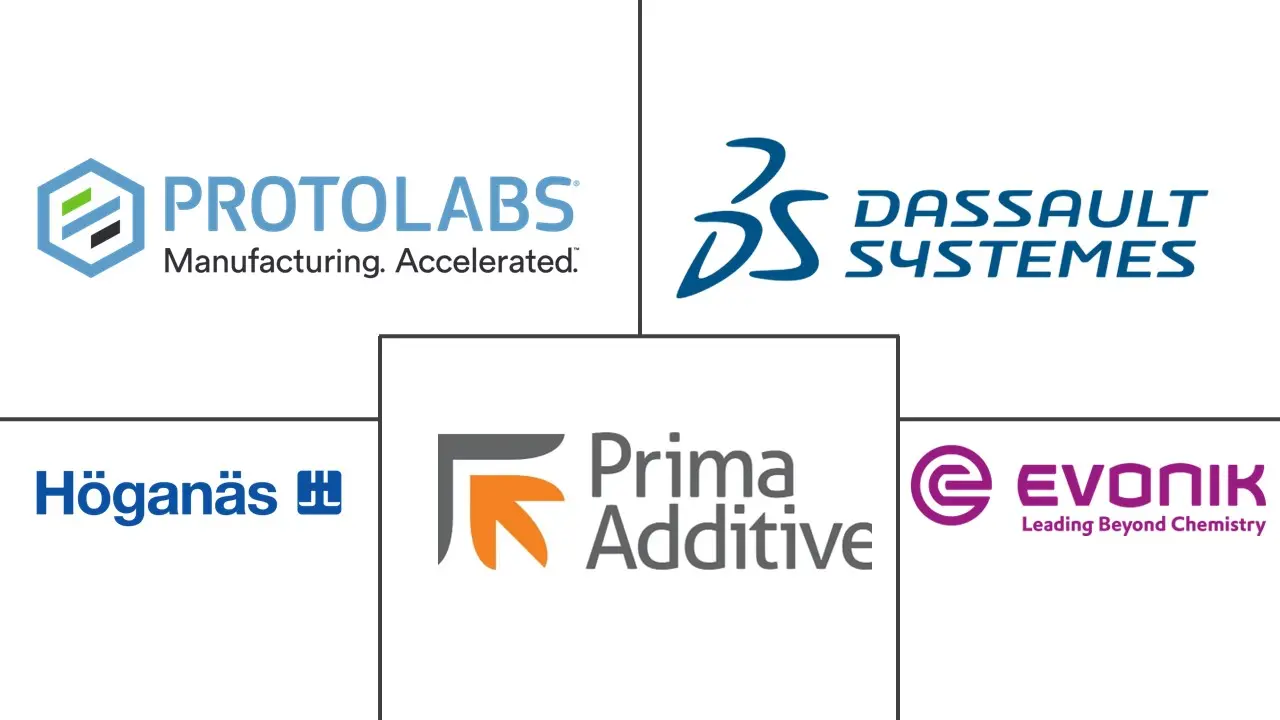Market Size of Powder Bed Fusion Process 3D Printer Industry

| Study Period | 2019 - 2029 |
| Market Size (2024) | USD 1.8 Billion |
| Market Size (2029) | USD 4.31 Billion |
| CAGR (2024 - 2029) | 19.09 % |
| Fastest Growing Market | Asia Pacific |
| Largest Market | North America |
| Market Concentration | Medium |
Major Players
*Disclaimer: Major Players sorted in no particular order |
Powder Bed Fusion Process 3D Printer Market Analysis
The Powder Bed Fusion Process 3D Printer Market size is estimated at USD 1.8 billion in 2024, and is expected to reach USD 4.31 billion by 2029, growing at a CAGR of 19.09% during the forecast period (2024-2029).
Over the last decade, additive manufacturing has evolved from a niche technology with limited applications to a significant player in contemporary manufacturing. Among these technologies, powder bed fusion (PBF) is one of the oldest in metal additive manufacturing, having matured to cater to various industry-specific applications.
- The advantages of PBF 3D printers have solidified their prominence in metal additive manufacturing. For instance, PBF printers boast high resolution and offer a broader material selection than methods like binder jetting, enhancing their market appeal. While PBF processes traditionally faced size limitations in their build envelope, manufacturers are pushing these boundaries. For example, SLM Solutions' SLM 800 boasts a build envelope of 500x280x850mm, surpassing the maximum build volume of most metal additive manufacturing printers, indicating the potential for producing larger parts at competitive costs.
- Moreover, advancements now allow for the construction of intricate parts without support. This breakthrough not only streamlines the process by eliminating post-processing but also bypasses the "45-degree rule," which mandates support for angles under 45 degrees. This newfound freedom enhances design intricacy and control for users.
- As consumer demand for personalized products surges, the powder bed fusion 3D printing technology is poised for growth. Its capability to deliver highly customized products swiftly and cost-effectively makes it increasingly appealing to manufacturers aiming to cater to this demand.
- The rising adoption of PBF technology in healthcare can be linked to the surging demand for tailored medical devices, advancements in PBF materials, and the growing accessibility of PBF machines. Beyond these factors, PBF technology has showcased its ability to enhance patient outcomes and curtail healthcare expenses, further encouraging healthcare providers.
- Relentless technological advancements, burgeoning demand across sectors, and significant innovations are driving this upward trajectory. With ongoing developments in materials and software, the horizons of PBF 3D printing technology are broadening. Innovations include new materials like metal alloys and composites tailored for PBF, alongside software tools streamlining design and production.
- Furthermore, due to its capability to manufacture lightweight and intricate components, the aerospace and defense sector has emerged as a leading adopter of PBF 3D printing technology. As the global aerospace industry expands swiftly, the appetite for lightweight parts surges, fostering a conducive environment for the growth of the examined market.
- A notable constraint on the adoption of additive manufacturing, especially in powder bed processes, is their relatively low productivity. One strategy to boost the build rate of laser powder bed fusion (LPBF) without incurring hefty hardware modifications is tweaking process parameters.

